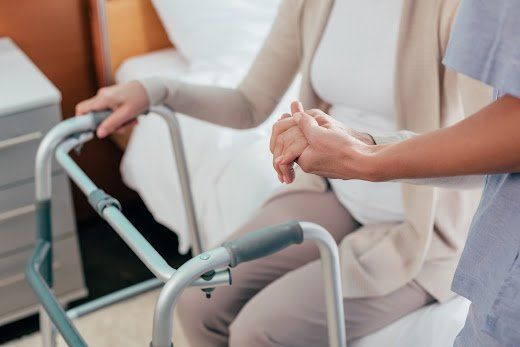3 Bed-Related Injuries in Nursing Homes

Nursing home residents are susceptible to various injuries if nursing homes do not put appropriate safety measures in place. Many of the injuries relate to or stem from bed issues. Read on to learn about three bedrelated injuries that afflict nursing home residents.
1. Bedrail Injuries
Nursing homes use bed rails for two main reasons. First, the bed rails prevent nursing home residents from rolling off the bed and falling on the floor. The bed rails also support residents getting off or on the bed.
As beneficial as bed rails are, they are also common causes of injuries in nursing homes. Many bedrail injuries occur when a resident rolls off the bed and is stuck between the bedrail and the bed. The pressure can cause tissue bruises and trigger breathing difficulties.
Below are common causes of such accidents.
Inadequate Regulation
The bedrail industry does not have tight regulations that befit such sensitive products. For example, many bed rails do not come with instructions or warnings on usage. The warnings are necessary because different body types call for different bed rails. As a result, some people use bed rails that are not safe.
Mismatch With Related Accessories
Most bed rails are only safe if you use them with specific mattresses and bed frames. However, such bed rails do not always stay with their specific accessories. For example, nursing home workers sometimes have to disassemble beds for cleaning, service, or movements. In such cases, the workers do not always match the rails to the right beds and mattresses, creating an injury risk.
Both nursing homes and bedrail manufacturers can be liable for bedrail injuries. The specific cause of the injury determines liability. For example, poor bedrail design and manufacturing make the manufacturer liable for related injuries.
2. Bedsores
Bedsores are wounds that occur if the skin experiences reduced blood flow. Nursing home residents who remain in specific positions for a long time experience pressure points that cut blood supply to the skin, triggering bedsores.
A nursing home resident might maintain the same position for a long time if:
- They have injuries or health problems that make movement difficult
- They are under sedation
- They are in poor health
- They are advanced in age
Infection worsens bedsores. For example, bowel incontinence can introduce germs into bedsores, worsening and spreading the wounds.
Nursing home workers can help prevent bedsores by doing the following:
- Reposition residents with mobility issues
- Ensure the residents have proper nutrition
- Address emerging sores before they become infected
Bedsores are mostly preventable, so nursing homes are typically liable for the injuries. You just need to prove how the nursing home's negligence caused the injury.
3. Falls From Beds
Lastly, some nursing home residents also experience falls when getting off or onto their beds. Falls can lead to bruises, sprains, and even fractures. Apart from bedrail issues, a resident might fall off the bed if:
- They don't have the strength to get off or on the bed on their own
- They roll off the bed while sleeping
Nursing homes use various measures to prevent falls and related injuries. For example, they:
- Use adequate bed rails
- Provide caregivers to help residents on and off beds
- Use low beds that reduce falling height in case of an accident
- Install floor pads that reduce impact in case of a fall
Nursing homes without fall-prevention strategies are liable for injuries that they could have prevented.
Nursing home accidents can cost you considerable heartache and your loved one considerable pain. You might also have to spend thousands of dollars to care for your loved one after the accident. Contact Borbi, Clancy & Patrizi, LLC to help you recover relevant damages and cushion you from the effects of the accident.
